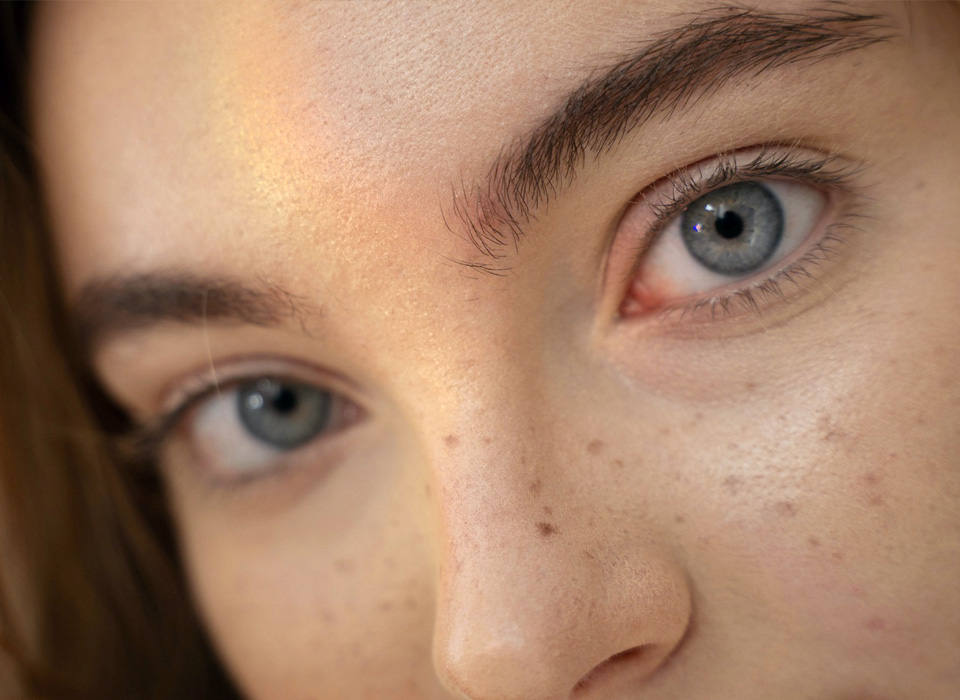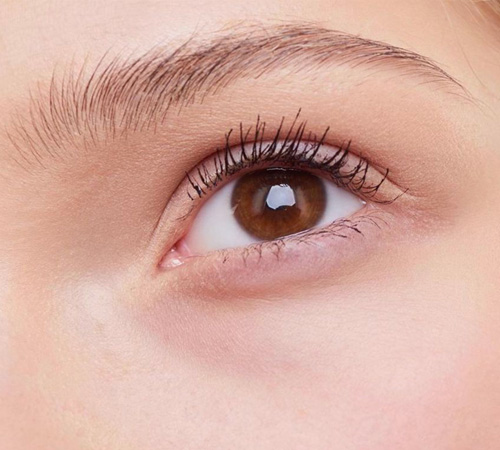
Thyroid Eye Disease
Table of ContentsToggle Table of ContentToggle
What Is Thyroid Eye Disease?
What Causes Thyroid Eye Disease?
The exact cause of Thyroid Eye Disease (TED), also known as Graves’ ophthalmopathy or Graves’ orbitopathy, is not fully understood. However, it is primarily associated with autoimmune processes and often occurs in individuals with an underlying thyroid condition, most commonly Graves’ disease. Here are the key factors that contribute to the development of TED:
- Autoimmune Response: TED is considered an autoimmune disease. In autoimmune disorders, the body’s immune system mistakenly attacks its own healthy tissues. In the case of TED, the immune system targets the tissues surrounding the eyes. The specific trigger for this autoimmune response is not known, but it is thought to involve complex interactions between genetic, environmental, and immunological factors.
- Thyroid Dysfunction: TED is frequently associated with Graves’ disease, an autoimmune condition that results in hyperthyroidism (overactive thyroid). In Graves’ disease, the immune system produces antibodies that not only stimulate the thyroid gland but can also cross-react with tissues around the eyes, causing inflammation and other eye-related symptoms.
- Genetic Predisposition: Genetics may play a role in the development of TED. Some individuals may have a genetic predisposition to autoimmune diseases, including TED, although specific genetic factors are not always clearly defined.
- Environmental Factors: While the exact environmental triggers remain uncertain, certain factors, such as smoking and stress, have been associated with the onset or exacerbation of TED. Smoking, in particular, is a known risk factor for both Graves’ disease and the progression of TED.
- Hormonal Changes: Hormonal fluctuations, especially among women, can influence the development and course of TED. This might explain why the condition is more common in women than in men.
- Immune System Dysregulation: TED involves an immune system dysregulation, where immune cells and antibodies attack the tissues around the eyes, leading to inflammation, swelling, and other eye-related symptoms.
It is important to note that not all individuals with a thyroid condition, such as Graves’ disease, will develop TED. The severity and course of TED can also vary widely among affected individuals. Managing both the underlying thyroid condition and TED itself is crucial. Healthcare professionals, including endocrinologists, ophthalmologists, and oculoplastic surgeons can assist in diagnosing and treating these conditions. Controlling the thyroid disorder and addressing the autoimmune response are central strategies in managing TED.
What Are the Signs of Thyroid Eye Disease?

- Proptosis (Bulging Eyes): This is one of the most characteristic features of TED. The eyes may protrude or bulge forward due to the swelling of the eye muscles and fatty tissues behind the eyes. This can lead to a wide-eyed or staring appearance.
- Periorbital Swelling: Swelling around the eyes is a common early sign of TED. It may cause puffiness or edema in the eyelids and the tissues around the eyes.
- Redness and Irritation: The eyes may become red, watery, and inflamed. Patients often experience discomfort, itching, and a gritty sensation in the eyes.
- Double Vision (Diplopia): TED can affect the alignment of the eyes, leading to double vision, especially when looking in certain directions. This occurs because the eye muscles may become enlarged and less coordinated.
- Eye Pain: Some individuals with TED experience pain or pressure behind the eyes, especially when moving the eyes or looking in different directions.
- Eyelid Retraction: The upper eyelid may retract, causing it to open wider than usual. This can lead to an appearance of a wide-eyed or “staring” look, and it can expose more of the white part of the eye (sclera) above the iris.
- Dry Eyes: TED can disrupt the normal functioning of tear production and distribution, leading to dry, irritated, and sensitive eyes.
- Corneal Exposure: In severe cases, the bulging of the eyes and eyelid retraction can lead to inadequate eyelid closure, which can result in corneal exposure and increased risk of corneal damage.
- Changes in Vision: Blurred vision or vision changes may occur, especially in advanced cases when the optic nerve is affected.
It is important to note that not all individuals with TED will experience all these signs and symptoms, and the severity of the disease can vary from person to person. Additionally, TED often follows the course of the underlying thyroid condition (hyperthyroidism) and may have periods of exacerbation and remission.
How Is Thyroid Eye Disease Treated?
Treatment for thyroid eye disease typically focuses on managing its symptoms and addressing the underlying thyroid dysfunction. The approach to treatment may vary depending on the severity of the condition and individual patient needs. Here are some common treatment options:
- Management of Thyroid Dysfunction: If the TED is associated with hyperthyroidism (an overactive thyroid gland), treating the thyroid disorder is the first step. This can involve medication, radioactive iodine therapy, or surgery, depending on the underlying cause.
- Lifestyle and Symptom Management: Patients are often advised to make lifestyle changes to manage symptoms, such as quitting smoking (if applicable) and using artificial tears and lubricating eye drops to relieve dry eyes. Wearing sunglasses can also help protect the eyes from UV radiation and wind exposure.
- Medical Therapy: Depending on the severity of TED, your healthcare provider may recommend various medications or procedures, including:
- Corticosteroids: These anti-inflammatory drugs can help reduce inflammation around the eyes. They may be administered orally or through intravenous infusion in more severe cases.
- Tepezza (teprotumumab): Tepezza is a medication specifically approved by the U.S. Food and Drug Administration (FDA) for the treatment of Thyroid Eye Disease (TED). It is a monoclonal antibody and an inhibitor of the insulin-like growth factor-1 receptor (IGF-1R). It is administered through intravenous (IV) infusion.
- Orbital Radiation Therapy: Radiation therapy may be used in some cases to reduce inflammation and swelling around the eyes.
- Surgery: In severe cases of TED, when other treatments are ineffective or complications like corneal exposure or optic nerve compression arise, surgical interventions may be necessary. Surgical options include:
- Orbital Decompression: This procedure involves removing bone from the eye socket to create more space for the bulging eye and relieve pressure.
- Eyelid Surgery: Reconstructive surgery can be performed to address eyelid retraction or lagophthalmos (inability to close the eyes fully).
- Strabismus Surgery: If TED affects eye alignment and causes double vision, strabismus surgery may be necessary to correct this issue.
- Supportive Care: Patients may receive additional support, such as vision therapy, psychological counseling, or pain management, to help manage the impact of TED on their quality of life.
It is important to note that the choice of treatment depends on the individual patient’s condition, including the severity of TED and any coexisting medical conditions. Treatment may be provided by a multidisciplinary team, including endocrinologists, ophthalmologists, and oculoplastic surgeons, to ensure comprehensive care for the patient. Regular follow-up and ongoing monitoring are also crucial to assess the progression of the disease and adjust the treatment plan as needed.

Sarah Avila, MD
Specialization: Eyelid Surgery & Aesthetics
Dr. Sarah Avila is an oculofacial plastic surgeon in Miami, Florida. After completing medical school, Dr. Avila completed a residency in ophthalmology at the Mount Sinai Hospital, followed by a highly competitive two-year ASOPRS-accredited fellowship in reconstructive and cosmetic oculofacial surgery at Emory University. During this fellowship, Dr. Avila focused on plastic surgery related to the eyelids, brows, lacrimal duct system, orbit, and face.



